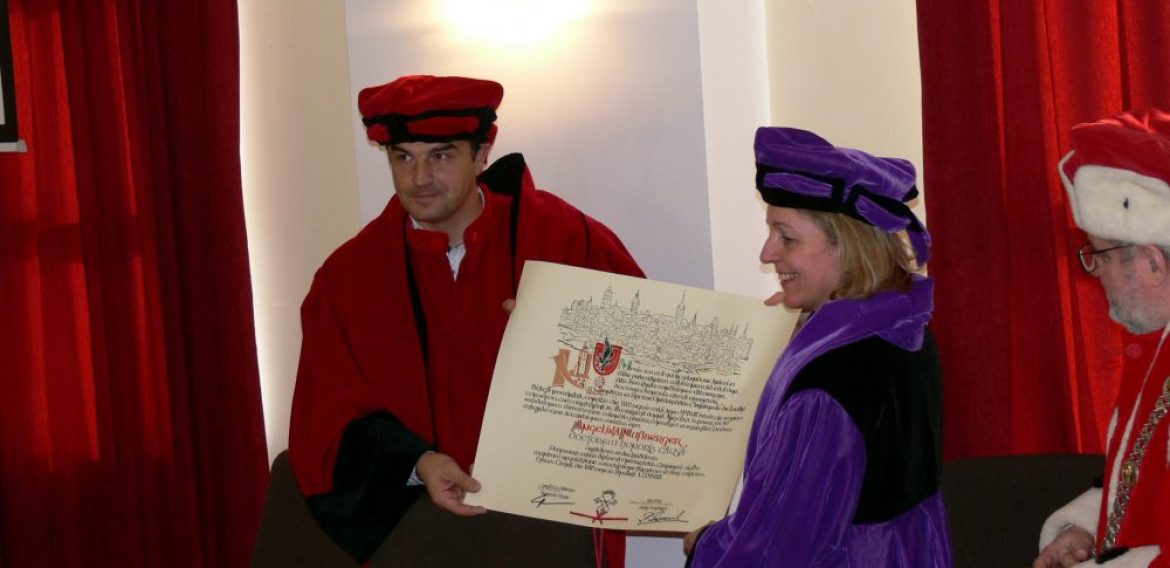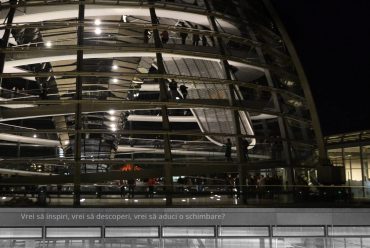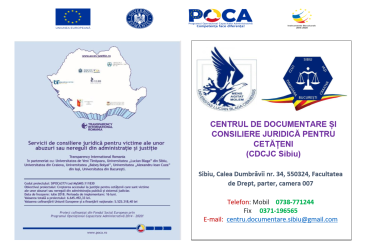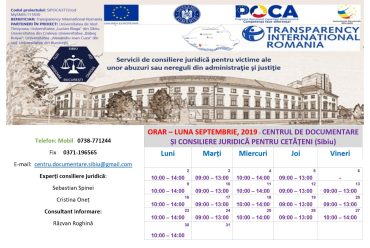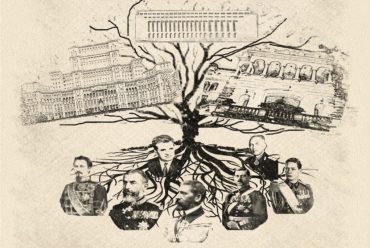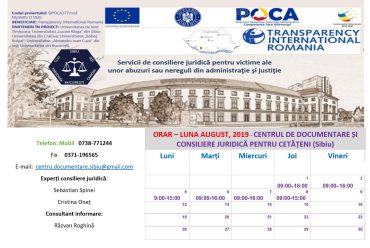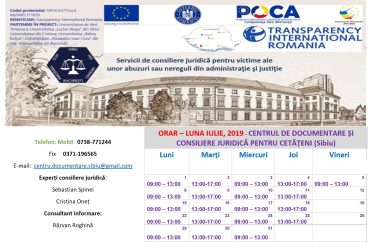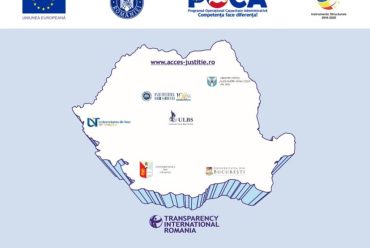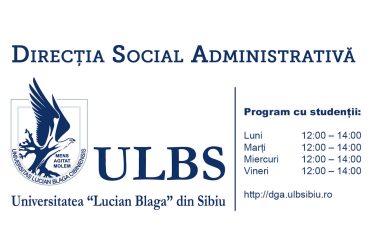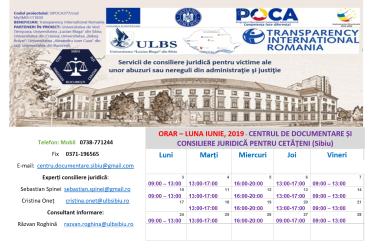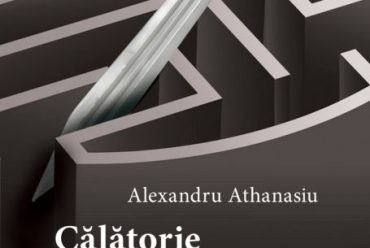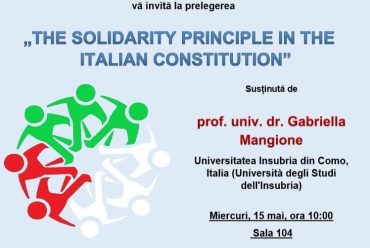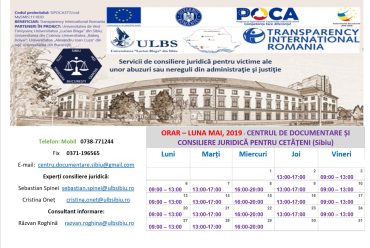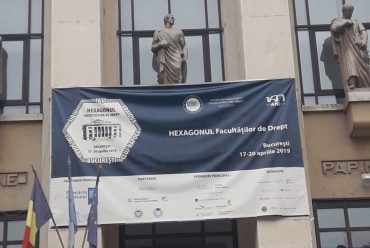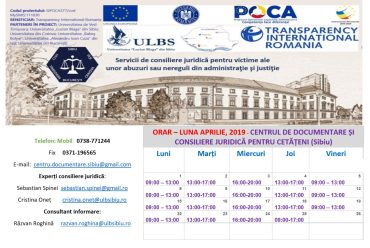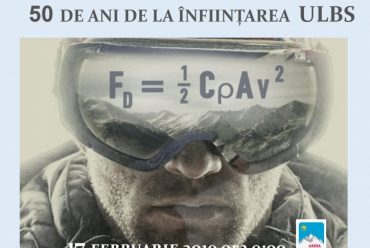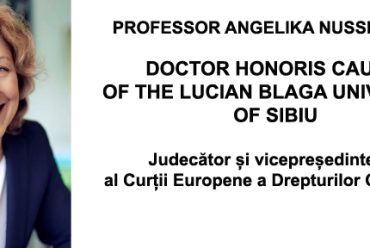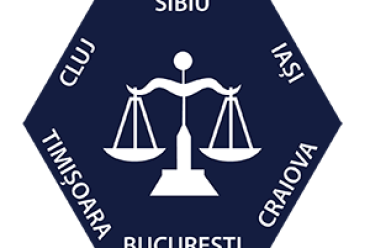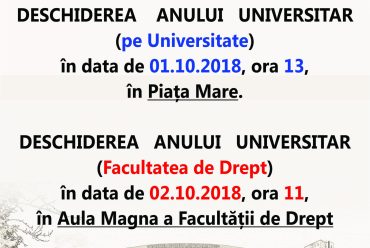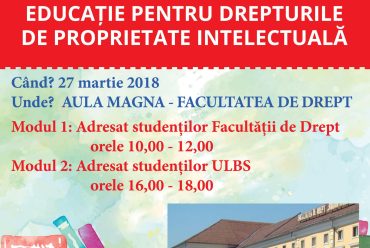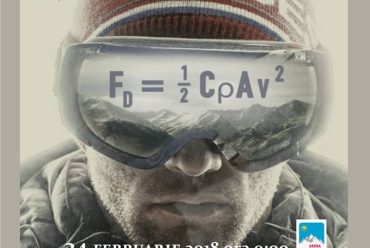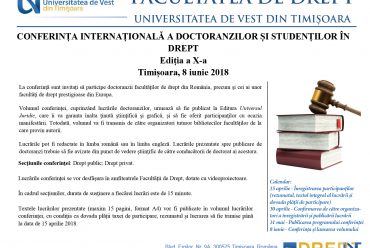Discurs HONORIS CAUSA – profesor ANGELIKA NUSSBERGER
Rule of Law in Europe
I) Spreading rule of law in Europe – a success story?
“In a world divided by differences of nationality, race, colour, religion and wealth [the rule of law] is one of the greatest unifying factors, perhaps the greatest, the nearest we are likely to approach to a universal secular religion.” These are the words of one of the most famous fighters for rule of law, the British Supreme Court judge Lord Bingham. He was not only a fighter for rule of law, but also an optimist. Is such optimism justified in Europe in the present times? There are two narratives on rule of law in Europe – a success story and a story of lost illusions. I will tell you both stories and reflect with you where we stand.
a) Rule of law as basic principle of constitutional and European law
Half a century ago, when Europe started from the scratch after the catastrophe of World War II and the break-down of the old world order, only half of the European States were in a position to accept rule of law as a basic principle for organizing State and society. All the countries of the so-called “socialist block” were disconnected from this part of the European heritage. While upholding the principle of democracy and codifying long lists of socialist human rights in all the constitutions established according to the model of Stalin’s Constitution of the Soviet Union, rule of law remained an outcast of the socialist value system. It was considered to be a remnant of the bourgeois capitalist worldview and had to be replaced by what was first called “revolutionary legality” and later on “socialist legality”. This meant a basically positivist and formalapproach to written law which could, however, at any time be given up for the sake of what was demanded for the accomplishment of revolutionary aims. Instead of legal certainty it thus enshrined a specific form of legal uncertainty and arbitrariness as it was never foreseeable what might be demanded by “the Revolution”. It was only in the late 1980s that the idea of a State based on rule of law was “discovered” by the Eastern European States such as Romania: Thus Art. 1 para. 3 of the Constitution reads:
Romania is a democratic and social state, governed by the rule of law, in which human dignity, the citizens’ rights and freedoms, the free development of human personality, justice and political pluralism represent supreme values, in the spirit of the democratic traditions of the Romanian people and the ideals of the Revolution of December 1989, and shall be guaranteed.
The sudden career of the principle of rule of law in all the newly elaborated constitutions after the break-down of communism is one pillar of the success story of rule of law in Europe. By now, rule of law has been taken up in all the European written constitutions.
2) Consensus on the meaning
a) General approach
The second pillar of the success story is the elaboration of a concept of rule of law that is both sophisticated and workable. It is true that it is a most difficult task to define such a broad and vague concept which has developed differently in different legal systems. Lord Bingham enumerated in his famous book “Rule of Law” the eight “ingredients”: Accessibility and predictability of the law, exclusion of discretion in the application of rights and liabilities, equality, good faith, adequate protection of human rights, conflict resolution on the basis of law, fair trial, and compliance with the obligations under international law. These “ingredients” coincide to a large extent with what the European Court of Human Rights has elaborated in its jurisprudence over the last decades. Rule of law is considered to be part of the “spirit” of the Convention and to underlie all the Convention provisions. The starting point can be a negative one: Rule of law is the opposite of arbitrariness. This is for example most evident in the cases of extraordinary rendition such as El Masri v. Macedonia in which a sort of “black hole in rule of law” was created circumventing all requirements of due process and closing the eyes even when torture was used for extracting confessions. In the Court’s view what has happened in those cases was an “anathema to the rule of law and the values protected by the Convention.”
b) Human rights guarantees as essential components of the principle of rule of law
What are the different components of rule of law? In how far can the European Convention on Human Rights give guidance even if the concept of “rule of law” is only referred to in the preamble, not in the text itself?
First and foremost, the most relevant provision is Article 6 of the Convention, the right to fair trial and independence of the judiciary. This article enumerates the most essential features of the concept of rule of law based on experience throughout the centuries such as the right to the presumption of innocence, the right to be heard, the right to defend oneself or through legal assistance, and the right to equality of arms. At the same time the basic notion of “fair trial”, i.e. an overall assessment, remains relevant.
Statistically, the violations of fair trial found most often by the Court are on the one hand the long duration of the procedure and on the other hand the non-implementation of final judgments. Both problems are signs of understaffing of the courts and dysfunction of the execution system. These problems should not be underestimated. Thus the Court draws the attention to “the important danger that exists for the rule of law within national legal orders when excessive delays in the administration of justice occur in respect of which litigants have no domestic remedy”.
Rule of law elements are not exclusively to be found in Art. 6. Article 3 enshrines the fundamental principle that the State must not torture or treat people in an inhuman or degrading way. An almost philosophical challenge was posed by the case Gäfgen v. Germany in which a police officer threatened a child’s kidnapper with torture in order to save the child’s life. Because of the threat the kidnapper led the police to the hiding place, but the child was already dead. Although Germany had sanctioned the police-officer on the basis of criminal and disciplinary law, the Court still found a violation as the sanction had not been hard enough. The Court accepted that such a case was not comparable to other cases concerning arbitrary and serious acts of brutality by State agents. Nevertheless it emphasized that sanctions which are “manifestly disproportionate to a breach of one of the core rights of the Convention”, do not have the “necessary deterrent effect in order to prevent further violations of the prohibition of ill-treatment in future difficult situations”.
The gist of Article 5, the right to liberty and security, is the protection against arbitrariness, another essential feature of “rule of law”. The same is true for Article 7, the guarantee that there should be no punishment without law, an idea that can be traced back to the old maxime of “nulla poena sine lege”, for the first time spelt out explicitly by Cesare Beccaria. The jurisprudence of the Court has refined this principle in many ways. Closely linked to it is the right not to be punished twice, laid down in Article 4 of Protocol No. 7. In this context the Court was confronted with the problem in how far somebody can be held accountable for a war crime after having been granted amnesty. The Court held that the protective clause of Article 4 Protocol No. 7 was not applicable to such a situation. On the contrary, the States were under an obligation to prosecute acts such as torture and intentional killings.
Last but not least Art. 14 guarantees the principle of equality of individuals before the law and thus also contains an essential element of “rule of law”.
c) Institutional and substantial safeguards
On the basis of these individual guarantees a general consensus has formed that the principle of rule of law needs institutional and substantial safeguards. The most important institutional safeguard is the independence of the judiciary; the most important substantial safeguards are legal certainty and proportionality.
aa) Independence and impartiality of the judiciary
Could we imagine a State without courts? We could, but we would immediately understand how threatening such a vision would be.
The Court has called the judiciary “guarantor of justice, a fundamental value in a law-governed State.” It has especially emphasized the role of the courts in preventing de facto or de iure impunity for unlawful acts. Thus it has stated that “judicial authorities must on no account be prepared to let the physical or psychological suffering inflicted go unpunished. This is essential for maintaining the public’s confidence in, and support for, the rule of law and for preventing any appearance of the authorities’ tolerance of or collusion in unlawful acts.”
But the very existence of courts is not sufficient. They are of no help if they are not independent and impartial.
The Court has elaborated a differentiated jurisprudence on the notions of “independence” and “impartiality”. In order to determine if a court is “independent” the Court focuses on many aspects such as the manner of appointment of its members and their term of office, the existence of safeguards against external pressure and the question whether the body presents an appearance of independence.
Although the Convention does not require States to comply with any theoretical constitutional concepts regarding the permissible limits of the powers’ interaction, the Court emphasizes in its jurisprudence the principle of “separation of powers”.
The most important case the Court has decided in this context is the case of Oleksandr Volkov against Ukraine concerning the dismissal of the President of the Military Chamber of the Supreme Court of Ukraine. He had been charged with what was called “gross procedural violations” and was therefore dismissed by Parliament because of “breach of oath”. In this case the Court has established numerous violations of the independence of the judiciary scrutinizing the composition of the different bodies deciding Mr. Volkov’s case and the procedure followed. Among other things it was considered to be a violation of the Convention that non-judicial staff appointed directly by the executive and the legislative authorities comprised the vast majority of the deciding body, the Higher Judicial Council. The Court thus discerned “serious issues pointing both to structural deficiencies in the proceedings before the Higher Judicial Council and to the appearance of personal bias on the part of certain members determining the case” which were not corrected at a later stage of the procedure.
As a consequence the Court has not only ordered the State to pay a non-pecuniary damage, but also emphasized the necessity of introducing general measures for reforming the system of judicial discipline. Furthermore, it held that the applicant should be reinstated in the post of judge of the Supreme Court at the earliest possible date relying on the very exceptional circumstances of the case and the urgent need to put an end to the violations of the Convention. By now the judgment has been partially implemented. The reform of the disciplinary system is under way, other reform measures are expected.
In the meantime the Court’s case-law has been further refined. In the Grand Chamber case of Ramos Nunez v. Portugal the Court stressed that its findings in Volkov v. Ukraine cannot be transferred to other cases without taking into account specific circumstances:
„… these findings should be regarded as a criticism based on the circumstances of the case and applicable in a system with serious structural deficiencies or an appearance of bias within the disciplinary body for the judiciary, as was the case in the specific context of the Ukrainian system at the time, rather than as a general conclusion.“ “…a purely abstract risk of this kind cannot be regarded as apt to cast doubt on the impartiality of a judge in the absence of specific circumstances pertaining to his or her individual situation.”
One of the problems of the Court’s jurisprudence in this context is that the same regulations can have very different effects depending on the legal culture of a country. The legal culture is, however, difficult to “measure” and difficult to evaluate. Cases on judicial independence are therefore difficult to adjudicate, first, because many important facts might not be known, and second, because there might be not only black and white, but also a lot of grey tones. It is rare that, as in the case of Sovtransavto v. Ukraine, a letter of the President of the Republic advising the judge on how to decide can be found in the file. However, it might not be so rare that such letters exist.
bb) Legal certainty
Legal certainty has many aspects. In most of the Convention provisions restrictions are only allowed “on the basis of law”. For the Court the existence of a legal provision in the respective national legal order as such is not sufficient. It also controls what it called the “quality” of the law. Thus the Court often repeats the following standard formula:
“The requirement of lawfulness … is not satisfied merely by compliance with the relevant domestic law; domestic law must itself be in conformity with … the principle of the rule of law, …. The notion underlying the expression “in accordance with a procedure prescribed by law” is one of fair and proper procedure …”
It is important that norms are formulated with sufficient precision in order to enable the individual to regulate his or her conduct accordingly. The individual “must be able – if need be with appropriate advice – to foresee, to a degree that is reasonable in the circumstances, the consequences which a given action may entail. This is for example very important in case of regulations giving the executive power large discretion. “The law must indicate the scope of any such discretion conferred on the competent authorities and the manner of its exercise with sufficient clarity, having regard to the legitimate aim of the measure in question, to give the individual adequate protection against arbitrary interference”.
cc) Proportionality
The third important criterion is proportionality, a principle well known in the German tradition where it was developed by the administrative courts in Prussia dealing with interventions by the police. For the Court the question of the proportionality of a measure is often the decisive question in deciding a case. Famous examples are cases where the Court has to balance freedom of religion against other interests of society. In the case S.A.S. v. France about the prohibition of the full-face veil, the Burka the Court held that the right of the society to define the minimum standards for “living together” outweighs the right of the individual to choose a specific outfit, even if this is based on religious convictions. The weighing of interests led to a different result in the case Eweida v. United Kingdom: In this case the Court held that the dress code of the British Airways and thus the employer’s interest in a uniform appearance of the employees did not outweigh the right of the individual to wear a religious symbol.
Proportionality is also relevant in the difficult fight against terrorism. Even if the individual’s rights are protected under Article 3 of the Convention which is considered to be an absolute right, in defining the threshold of what is to be considered “inhuman” the Court applies the proportionality principle, even if in a hidden manner. Thus, to give just one example, in the case Ramirez Sanchez v. France, the Court did not find a violation of Article 3 although the applicant was held in solitary confinement for eight years. In this context that Court took into account that the applicant was considered to be the most dangerous terrorist in the 1970s and that he was convicted for terrorist-related offences. The Court explained:
“The Court shares the CPT’s concerns about the possible long-term effects of the applicant’s isolation. It nevertheless considers that, having regard to the physical conditions of the applicant’s detention, the fact that his isolation is “relative”, the authorities’ willingness to hold him under the ordinary regime, his character and the danger he poses, the conditions in which the applicant was being held during the period under consideration have not reached the minimum level of severity necessary to constitute inhuman treatment within the meaning of Article 3 of the Convention.”
dd) Enhanced responsibility for the State’s actions and omissions
Last but not least, it has to be emphasized that the Court has added a specific new dimension to the principle of rule of law. State authorities are not only responsible for human rights violations they commit themselves, but also for those they enable to be committed. Furthermore, a State based on rule of law cannot close its eyes to the consequences of its actions and omissions even if they happen outside its territory. This might be called responsibility “beyond one’s one nose”. The famous first example of the relevant jurisprudence is the case Soering v. United Kingdom where the Court held the British authorities responsible for potential human rights violations by the American authorities after extradition. This idea has been generalized since and is relevant for the case-law in extradition and expulsion cases such as MSS v. Greece and Belgium and Taraquel v. Switzerland. In the case Omar Othman v. United Kingdom this approach has been stretched to potential violations of Article 6 of the Convention, the right to fair trial:
“It is established in the Court’s case-law that an issue might exceptionally be raised under Article 6 by an expulsion or extradition decision in circumstances where the fugitive had suffered or risked suffering a flagrant denial of justice in the requesting country.”
Thus, rule of law is, to a certain extent, exported to countries outside Europe. Nevertheless, not all potential Convention violations are relevant in this context. Rather, the Court has defined a sort of “second lower level” of rule of law comprising only the most basic principles. In this context flagrant violations of fair trial are outlawed such as convictions in absentia with no possibility subsequently to obtain a fresh determination of the merits of the charge, trials which are summary in nature and conducted with a total disregard for the rights of the defence, detention without any access to an independent and impartial tribunal to have the legality the detention reviewed, and the deliberate and systematic refusal of access to a lawyer, especially for an individual detained in a foreign country. This does not mean, however, that outside of Europe rule of law would have different contents. It only circumscribes and restricts the responsibility of European States for human rights violations committed by “others”, but rendered possible by their own actions and omissions.
The narrative of the success story of rule of law in Europe is based on solid ground. It suggests that real progress has been achieved. Nevertheless, it has to be asked if this is really true. A deeper analysis might lead to a less optimistic result. It is also possible to play the role of the advocatus diaboli and to argue that rule of law in Europe is a story of lost illusions.
III) Spreading rule of law in Europe – a story of lost illusions?
1) Discrepancies between legal obligations and reality
The cases brought to the European Court of Human Rights every year do not suggest that there would be any progress in implementing human rights based on rule of law. There are many cases which might be called “anti-rule-of-law-cases” as they manifest complete arbitrariness and violence on the part of the State authorities, above all the police and the prison guards. The following short anecdote may be revealing. In a Ukrainian file a report on a short interview of a policeman was reproduced. He was asked if he had mistreated the detainee and answered: “No, I have not mistreated him. He had already confessed.” This proves an attitude towards others in a vulnerable situation which should have been outlawed already many centuries ago. Nevertheless, the finding of a Convention violation because of the use of violence in order to obtain confessions can be regarded as routine in Strasbourg. There are no signs that this will improve in the future.
Other “hard cases” concern flagrant violations of the right to liberty where arbitrariness reigns. Thus the Court had for example to deal with pretrial detention ordered to prevent people from participating in demonstrations or to silence political opponents. The case of Mammadov v. Azerbaijan might serve as an example:
“The Court considered that Mr Mammadov, who had a history of criticising the Government, had been arrested and detained without any evidence to reasonably suspect him of having committed the offence with which he was charged, namely that of having organised actions leading to public disorder. The Court concluded that the actual purpose of his detention had been to silence or punish Mr Mammadov for criticising the Government and publishing information it was trying to hide.”
The Court judgment dates back to 2014. In summer 2019 Mr. Mammadov was released, after a procedure under Article 46 para. 4 of the Convention had, for the first time in the Court’s history, been started. The case is still pending before the Court.
Similar cases are to be reported from other countries where basic guarantees of rule of law are denied during trials and pretrial detention is ordered without any or without sufficient reasoning.
There are also cases which illustrate that courts in Europe apply the law in a completely arbitrary manner. A good illustration is provided by the case of Khamidov v. Russia in which the house of a Chechen family was occupied by Russian police without any legal basis. The damage to the house was acknowledged by the authorities as well as in one court judgment. Nevertheless the court judgment was ignored and the relevant reports were not accepted by the competent Russian court. The European Court used very strong language:
“The Court is perplexed by this conclusion and cannot see how it could be reconciled with the abundant evidence to the contrary, and, first of all, with the findings made in the judgment of 14 February 2001, or the replies from public officials. In the Court’s view, the unreasonableness of this conclusion is so striking and palpable on the face of it that the decisions of the domestic courts in the 2002 proceedings can be regarded as grossly arbitrary, and by reaching that conclusion in the circumstances of the case the domestic courts in fact set an extreme and unattainable standard of proof for the applicant so that his claim could not, in any event, have had even the slightest prospect of success.”
Confronted with such repetitive cases it may be allowed to ask if the inscription of the principle of rule of law in constitutions and the ratification of an international treaty based on rule of law is more than a lip-service.
Looking back at the decades of human rights jurisprudence it might even be asked if the standards already achieved are lowered again. Is progress an illusion?
One sign of retrogression might be that the Court’s authority is undermined by the deliberate non-execution of its judgments. One example is the introduction of a special procedure in Russia to contest the enforcement of binding judgments deemed not to be compatible with the Constitution. This mechanism was already used twice – a clear sign of disrespect towards the Court.
Another worrying sign are the reform measures in several European States clearly targeted at the independence of the judiciary and breaking taboos in a way nobody had expected. Up to now Europe does not seem to have a good recipe for such transgressions. The Strasbourg Court is – unlike the Luxembourg Court – not able to react immediately because of the principle of subsidiarity. Suspensive measures based on Rule 39 are possible only in cases where life and limb are at risk, not in cases where the independence of the judiciary is endangered. That is the status quo of the jurisprudence, even if such cases might also be worth an immediate response.
2) Controversies about the core meaning of the principle of rule of law
Furthermore, even if many different aspects of the principle of rule of law have been elaborated by the Court in the last decades, essential questions remain unanswered. One important controversy concerns jury trial, on the one hand deemed to be especially fair and transparent, on the other hand heavily criticized as the judgments are, as a rule, not reasoned. The critique of the jury trials touches upon the constitutional identity of some member States of the Convention system which consider the introduction of jury trials as a major achievement in implementing rule of law. It is worth quoting the arguments of the Irish Government who acted as a Third Party intervener in the case Taxquet v. Belgium:
“In the Irish Government’s submission, the system of jury trial in Ireland was the unanimous choice of accused persons and of human-rights advocates and was viewed as a cornerstone of the country’s criminal-law system. There had never been a complaint that the system lacked transparency or impinged on or inhibited the rights of the accused. The system inspired confidence among the Irish people, who were very attached to it for historical and other reasons.” ….
“The Irish Government wondered how a system of trial that had been in operation for centuries and long predated the Convention could now be considered to breach Article 6 § 1.”
Similar seemingly insurmountable differences are seen in the attitude towards trials in absentia. While according to Italian procedural law the accused is not provided with the opportunity to have a new evidentiary hearing at the appeals stage after a condemnation in absentia, the German Constitutional Court considers such a trial as incompatible with human dignity and rule of law. It argues that in such a case an extradition would even violate German constitutional identity. A European Arrest Warrant could not be executed.
“The minimum guarantees of the rights of the accused in criminal trials that are mandated by the principle of individual guilt also have to be observed when deciding on an extradition executing a sentence rendered in the absence of the requested person.
“The court that decides on an extradition is under the obligation to investigate and establish the facts of the case, an obligation that also falls within the scope of Art. 1 sec. 1 GG. The relevant facts in particular include what kind of treatment the requested person will have to expect in the requesting state. It does not follow from this obligation that the German courts always have to review in detail the reasons for a request for extradition. This holds true in particular in the context of extradition proceedings within Europe, where the principle of mutual trust applies. However, this trust is shaken if there are factual indications that the requirements that are absolutely essential for the protection of human dignity will not be met if the requested person is extradited.”
While the argumentation of the German Constitutional Court largely draws on the interpretation of Article 6 by the European Court of Human Rights it is questionable in how far the creation of an “identity control” is at odds with the European Court of Justice’s argument about the “principle of trust” underlying cooperation among European States. But anyway the most recent judgments of the Luxembourg Court on the situation in Poland concerning the judicial reform as well as on the prison conditions in various European member States show the fragility of the principle of mutual trust. It seems that the general situation was more reinsuring and optimistic some five years ago.
IV) Conclusion
The decisive question therefore is which narrative is true. Where do we stand 70 years after the foundation of the Council of Europe in 1949, 30 years after the end of the Cold War in 1989, 15 years after the accession of many Eastern European States – among them Romania – to the European Union in 2004? Building up a new and united Europe with a European Court of Human Rights and rule of law – is it a success story or a story of lost illusions?
There is some truth in both narratives, the optimistic and the pessimistic one.
The mission of all those striving for societies based on rule of law resembles the task of Sisyphus. We have a huge boulder in front of us. We have to push it up on top of a mountain. We can never exclude that the boulder might roll down again, but we must never give up. This mythological story can be interpreted in the perspective of Albert Camus. The last words of his philosophical study are:
« La lutte elle-même vers les sommets suffit à remplir un coeur d’homme. Il faut imaginer Sisyphe heureux.”
(The struggle itself leading up to the summit is enough to fill a man’s heart. We must imagine Sisyphus happy).


